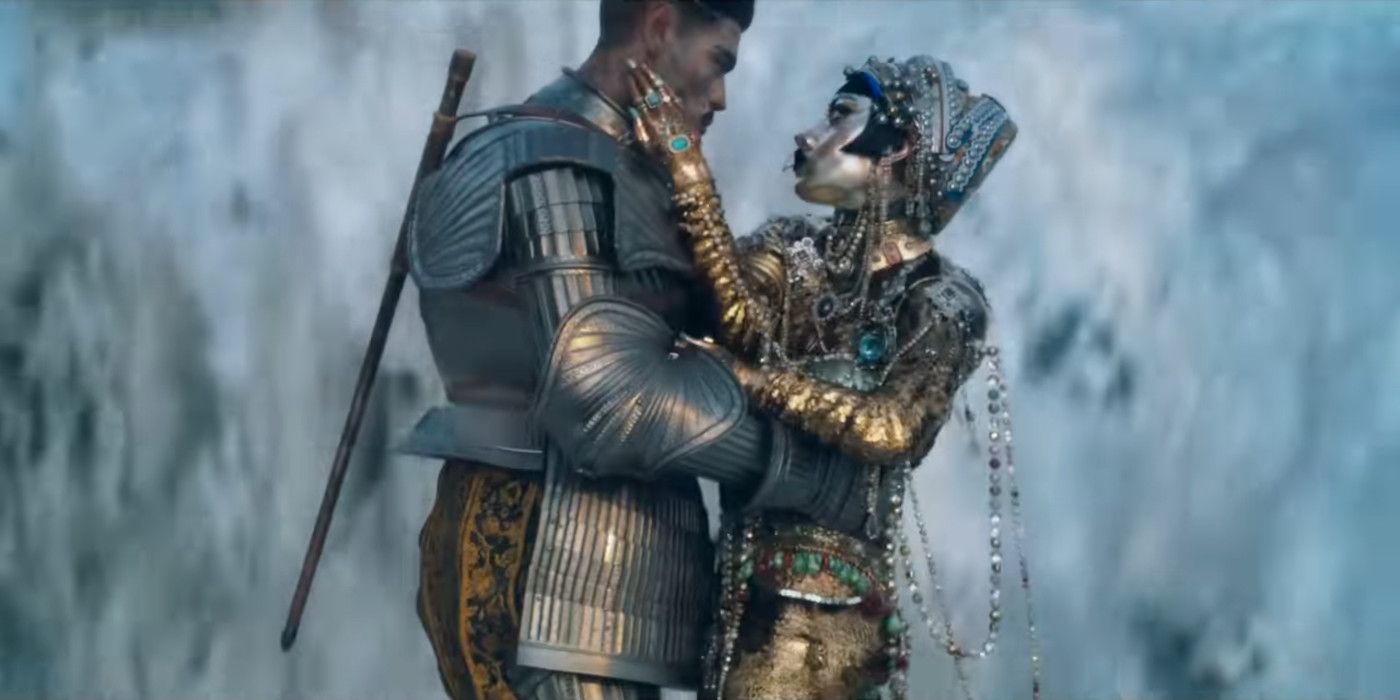The third volume of Love, Death & Robots brings back Netflix's hardcore adult animation, including the the return of Spanish filmmaker Albert Mielgo, who won an Emmy for his season one episode, "The Witness." The show has developed a reputation for pushing boundaries both in terms of content and ambitious animation styles, and Mielgo's new episode "Jibaro" is a great example of that ambition.
"Jibaro" is a re-imagining of the siren song folktale, containing minimal dialogue and centering on a deaf knight who is immune to this particular siren's song. The siren is intrigued by the knight, who's also drawn to her for the ornate gold and jewels she's made of, creating a dangerous and cautionary attraction between the two characters.
Mielgo spoke to Screen Rant about his ambitious approach to "Jibaro," explaining both his ambitious creative process and his storytelling approach.
Screen Rant: "Jibaro" has a sense of tangible realism to it, with so many water simulations or liquid simulations. Did you intentionally put as many difficult things into this episode as possible, and how did you wind up going this direction?
Alberto Mielgo: Yeah. I mean, it was a total technical challenge for real. And when I was coming up to my team with the design of the girl full of chains, and then it's going to be colliding with water. Everybody was like, "My God, can we simplify that?" But I need it to be like that. I imagine it to be like that. Everything made sense when you see it.
Obviously there are different ways that you can do it. You can simplify it. You can put the camera looking somewhere else so you can avoid doing things. But I love technology, and I like to push the boundaries, especially visually - not for the sake of just pushing the boundaries, but to serve the story. So I felt that that was the right way to do it. It was suffering, but we ended up doing it, which is cool. We finished it.
I thought that was the most impressive thing about it. I'm noticing all of the different textures you've got, but then the character motion is also so realistic. Was that motion capture, or was that done manually?
Alberto Mielgo: No, it's keyframe animation. But what I like to do is to record animation reference from, in this case, we had a choreographer, Sara Silkins, that she did a really cool job, and we were basically for two weeks rehearsing trying to figure out what are the movements, what are the motivations of the characters, how do they move, how do they dance, how they communicate all these feelings through dancing.
And even the knights, I thought it was very interesting to use dancers rather than stunt actors or martial arts actors, just because they control their movement. And it's usually really fast how they move dancers. It was almost like extra violence somehow. So, what we do is basically we record everything in different angles, close ups for the facials and yes, we animate based on those reference.
On top of that, you chose the siren story, but you chose to portray a dual morality. Normally, it's only the one side of the temptation, but you actually gave a morality to both sides of the equation here and decided to do it entirely in a nonverbal way.
Alberto Mielgo: Yeah. Well, I wanted to do something that obviously visually is something that I know how to do. I've been doing it for years, I'm a self-taught artist, and basically I came up with a style that works for me.
In terms of having some sort of nonverbal film, you can actually solve a lot of things by having a narrator, for example. But I wanted to be a little bit abstract in a way, and I wanted also people to have their own conclusions. Because nothing is really explained, it's basically visuals trying to tell you as accurate as possible what's going on with the characters.
I like it because everybody's going to have different versions of the film. You might need to watch it twice. You might watch it three times. Who knows? Nothing is too explained on its face.
Check out our Love, Death & Robots interviews with creator Tim Miller & supervising director Jennifer Yuh Nelson, as well as director Emily Dean.
Love, Death & Robots volume 3 is now available to stream on Netflix.



